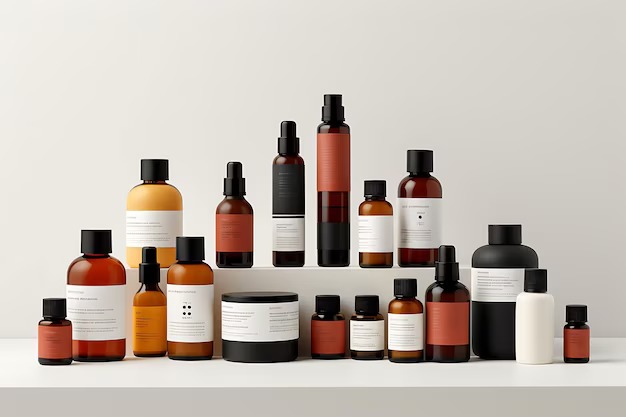Creating a brand from scratch is an exciting journey that involves strategic planning, creativity, and a deep understanding of your target market. At Alickreative, we believe that a well-defined product strategy and effective packaging design are crucial components of successful brand building. This guide outlines essential steps to help you establish a strong brand identity and develop products that resonate with your audience.
1. Conduct In-Depth Market Research
Understand Your Target Audience
Identifying your target audience is the first step in building a successful brand. Conduct surveys, interviews, and focus groups to gather insights into their demographics, preferences, and pain points. Understanding your audience will guide your product development and marketing strategies.
Analyze Competitors
Examine your competitors to understand their strengths and weaknesses. Analyze their products, branding, marketing strategies, and customer feedback. This analysis will help you identify gaps in the market and opportunities for differentiation.
Identify Market Trends
Stay informed about current trends in your industry. Look for shifts in consumer behavior, emerging technologies, and popular design elements that could influence your product strategy and packaging design.
2. Define Your Brand Identity
Establish Your Brand Purpose
Your brand should have a clear mission and vision that resonates with your target audience. Ask yourself:
- What problem does your product solve?
- What values do you want your brand to represent?
Create a Memorable Brand Name and Logo
Choose a brand name that is unique, easy to remember, and reflective of your brand’s identity. Design a logo that captures your brand’s essence and can be easily recognized across various platforms and packaging.
Develop a Compelling Brand Story
A strong brand story helps create an emotional connection with your audience. Share the journey behind your brand, the inspiration for your products, and the values that drive you. A compelling narrative can differentiate your brand in a crowded market.
3. Develop a Solid Product Strategy
Prioritize Quality and Innovation
Ensure that your products meet high-quality standards and provide real value to your customers. Focus on innovative features that set your products apart from competitors. Consider using unique ingredients, sustainable materials, or cutting-edge technology.
Align Product Development with Brand Identity
Your products should embody the values and personality of your brand. Whether it’s through sustainable sourcing, ethical production, or exceptional customer service, make sure your offerings reflect your brand’s commitment to quality and integrity.
Test Your Products
Before launching, conduct thorough testing to gather feedback and make necessary adjustments. This could involve product sampling, focus groups, or beta testing with a select group of customers to refine your offerings.
4. Create Effective Packaging
Design for Visual Appeal
Packaging is often the first interaction a customer has with your product. Invest in eye-catching designs, colors, and typography that align with your brand identity. Your packaging should tell a story and evoke emotions that resonate with your audience.
Ensure Functionality and Usability
While aesthetics are important, functionality should not be overlooked. Packaging should protect the product, be easy to open, and facilitate storage. Consider how customers will use and dispose of the packaging, and aim for convenience and sustainability.
Emphasize Sustainability
Consumers are increasingly prioritizing sustainable products. Explore eco-friendly packaging materials and practices, such as biodegradable materials or minimalist designs that reduce waste. Highlight your commitment to sustainability on your packaging to attract environmentally conscious consumers.
5. Develop a Marketing Strategy
Build Anticipation Before Launch
Create excitement around your brand launch through pre-launch marketing. Use social media teasers, email campaigns, and collaborations with influencers to generate buzz and build a community around your brand.
Leverage Social Media
Use social media platforms to engage with your audience and promote your brand. Share behind-the-scenes content, product launches, and customer stories to create an authentic connection with your followers.
Create a Website and E-Commerce Platform
A well-designed website is essential for establishing your brand online. Create a user-friendly e-commerce platform that showcases your products, provides essential information, and makes it easy for customers to purchase.
6. Monitor Performance and Adapt
Gather Customer Feedback
After your launch, actively seek feedback from customers regarding their experiences with your products and packaging. Use surveys, reviews, and social media interactions to gather insights for continuous improvement.
Analyze Performance Metrics
Monitor key performance indicators (KPIs) such as sales data, website traffic, and customer engagement. Analyzing these metrics will help you assess the effectiveness of your product strategy and marketing efforts.
Be Prepared to Adapt
The market landscape is constantly evolving. Stay agile and be willing to adapt your product offerings, branding, and packaging in response to changing consumer preferences and market trends.
Conclusion
Building a brand from scratch is a multifaceted process that requires careful planning, creativity, and adaptability. By conducting thorough market research, defining a strong brand identity, developing quality products, and creating effective packaging, you can set your brand up for success. At Alickreative, we are dedicated to helping businesses navigate this journey and unlock their potential. Together, let’s create a brand that not only stands out but also resonates deeply with your audience!









